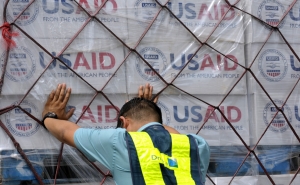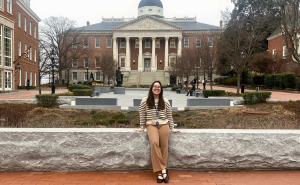Public Health In Crisis: Addressing the Treatment of the Public Health Workforce

Interview by Lindsay Smith Rogers
Throughout the pandemic, public health workers have been threatened, harassed, fired, or forced to resign. Addressing these issues and providing protections to the workforce is paramount to ensure we’re prepared for the next public health crisis.
In this Q&A, adapted from the November 17 episode of Public Health On Call, Lindsay Smith Rogers talks with Beth Resnick, DrPH, MPH ’95, a senior scientist at the Bloomberg School and cofounder of the STOP! Partner Group, and Nilesh Kalyanaraman, MD, Health Officer of Anne Arundel County in Maryland, about how some states have passed laws restricting public health authority, and why it’s critical to address these issues before the next public health crisis.
Listen to the podcast here.
What kind of violence and/or backlash have public health officials had to face in the workplace, or even at their private residence?
BR: Unfortunately, many of our health department leaders and their staff across the country have experienced threats to their jobs, safety, and even their family members. The scariest part is that these threats have often come from their own community members or, in some places, [from] organized militias, and even the elected leaders themselves, which has been really quite frightening.
Have public health leaders been experiencing these kinds of threats throughout the pandemic, or only more recently?
NK: During the beginning of the pandemic, there was a strong sense of unity in the community and we were ready to respond. We ran on adrenaline and goodwill for a long time.
However, as the pandemic went on, there were more disagreements and building tensions in communities. That vitriol took a toll on us and our staff. We've had protests outside of our health department and some of our staff have been harassed.
What can be done to support the public health workforce going forward?
BR: We really need to think about this as a three-pronged approach. The first piece is clearly that the threats and harassment need to stop and there must be additional protection and mental health support.
Second is providing additional funding and support to the workforce. We need people, support, and updated equipment and technology. It became clear during this pandemic that if you don’t have the basic tools that you need, you can’t do your job.
Last is maintaining public health authority, which is being stripped away.Having the authority to be able to put public health protections in place, such as quarantines and contact tracing, is extremely important.
As of October 2021, The New York Times reports that at least 32 states have passed new laws to restrict public health enforcement, outlaw vaccine or mask mandates, and/or get rid of other public health protections.
Dr. Kalyanaraman, it’s been nearly two years since the pandemic started. How is your staff doing?
NK: Our staff is feeling tired, though our hearts are in this. We are prepared to care for our communities and it’s been a mission of love, but that doesn’t mean that we’re not tired and that we don’t need greater support from our community.
Public Health On Call
This Q&A was adapted from the November 17 episode of Public Health On Call Podcast.
What kind of funding setbacks has public health faced over the years and how has that affected the U.S. handling of the pandemic?
NK: From 2008 to 2009, when the financial crisis occurred, we saw a sharp cutback in public health funding, and we’re seeing some of the consequences of that when it comes to staffing as well as investment in infrastructure.
Additionally, one of the things that has come up a lot is data: having data and sharing it across systems. We have not funded our data infrastructure, and that’s made it really challenging. I can't tell you how many times I've been asked, “So what's the data on this particular slice of the population? What's happening with their case rate vaccination?” We've got to dive across multiple datasets, really antiquated systems.
Dr. Resnick, can you tell us more about the STOP! Partner Group that you’ve recently cofounded?
BR: We’ve had lots of people jumping in, including the FBI and CDC, as well as different membership organizations and people at schools of public health. Our group is looking at how to improve access to law enforcement and provide more protections and resources to the public health workforce.
Additionally, there’s a new center at the Bloomberg School called the Psychosocial, Organizational, and Environmental Total Worker Health Center. The Center will aim to support mental health for the workforce, as well as provide training and modules for public health workers. It’s all an effort to ensure that our workforce knows we care about and support them and want them to be safe at their jobs.
Lindsay Smith Rogers, MA, is the producer of the Public Health On Call podcast and the associate director of content strategy for the Johns Hopkins Bloomberg School of Public Health.




